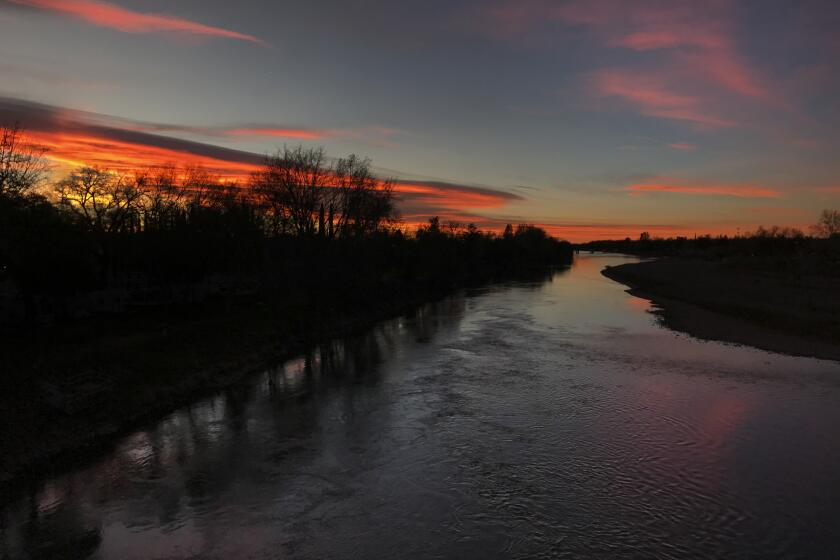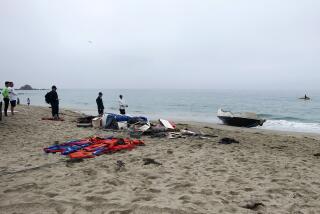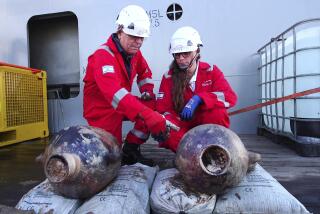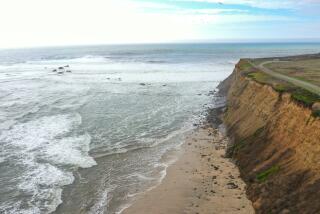Drought-stricken Lake Mead’s receding waters reveal a sunken WWII-era vessel
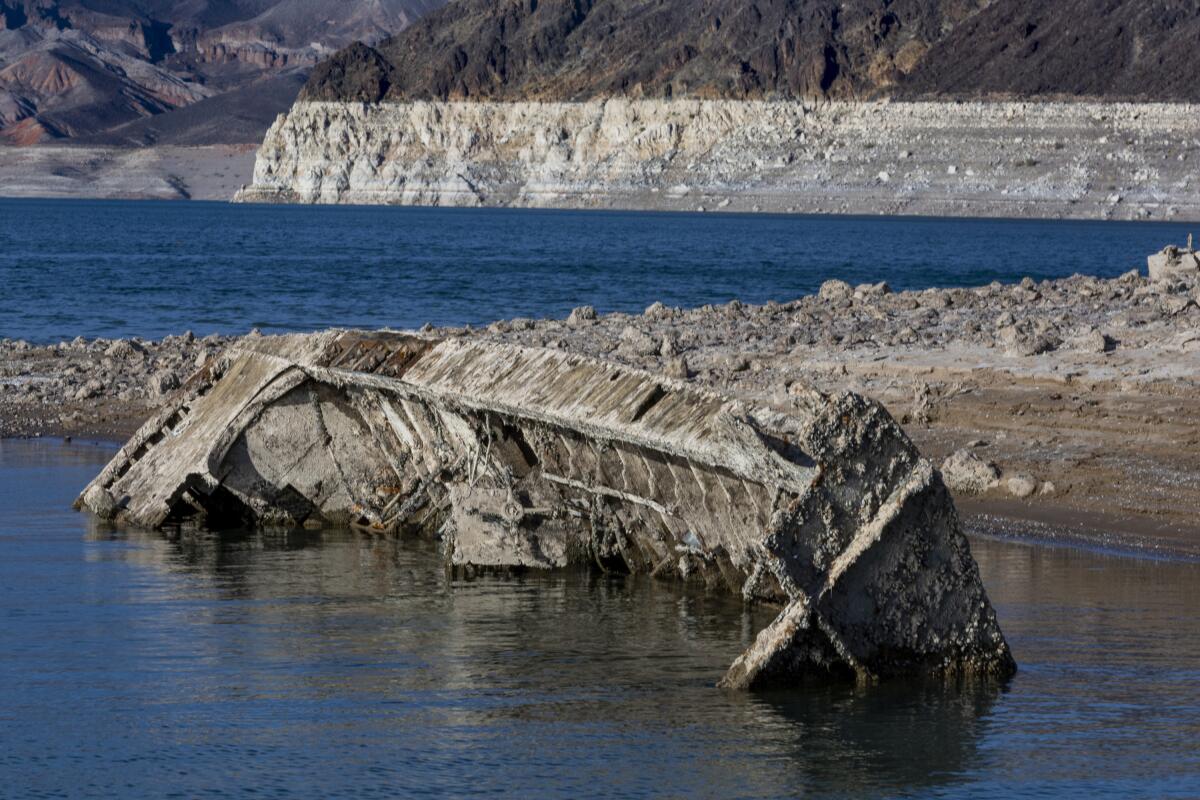
- Share via
In recent months, falling water levels at Lake Mead have revealed multiple bodies, including the skeletal remains of a probable homicide victim found in a barrel, and sunken pleasure boats.
Now, the receding waters have exposed a sunken World War II-era vessel — a Higgins boat used for beach landings, according to the National Park Service.
The landing craft had at one point been so far underwater that the park service sent divers to the site beginning in 2006. The Associated Press reported that the craft had long been 185 feet below the surface.
Photos show the boat now only half-submerged, listing onto its side.
California regulators have begun curtailing the water rights of many farms and irrigation districts along the Sacramento River, forcing growers to stop diverting water from the river and its tributaries.
“The NPS suspects that this WWII surplus craft was put into service on the lake for various reasons and then partially salvaged before it sank in its current location,” the park service said in an email. “Whether it sank by accident or was purposely sunk to get rid of a vessel no longer of use is unclear.”
Details about how the vessel ended up at Lake Mead are limited.
“The surplus nature of the craft highlights an earlier era of the Lake when Las Vegas and Lake Mead were much more remote and removed from much of the United States, where relatively inexpensive WWII surplus could be pressed into duty for new peaceful purposes in the park,” the park service said.
The uncovering of the boat, while likely to draw the attention of Lake Mead visitors, is also a reminder of the effects climate change and severe drought have taken on the Colorado River reservoir between Nevada and Arizona.
As Lake Mead shrinks after almost two decades of severe drought, accumulated items on the lakebed are being exposed.
Lake Mead, the nation’s largest reservoir, was at about 27% of capacity Friday, inching perilously closer to “dead pool” levels, federal officials said. At that point, about 150 feet below its current level, the lake would drop below its lowest intake valve, which could cripple water supplies in the western United States.
The lake is forecast to drop more than 26 feet by next July.
In response to the plummeting levels at Colorado River reservoirs, the federal government is seeking emergency cuts to the amount of water that California and six other western states take from the river in coming months.
More to Read
Sign up for Essential California
The most important California stories and recommendations in your inbox every morning.
You may occasionally receive promotional content from the Los Angeles Times.
